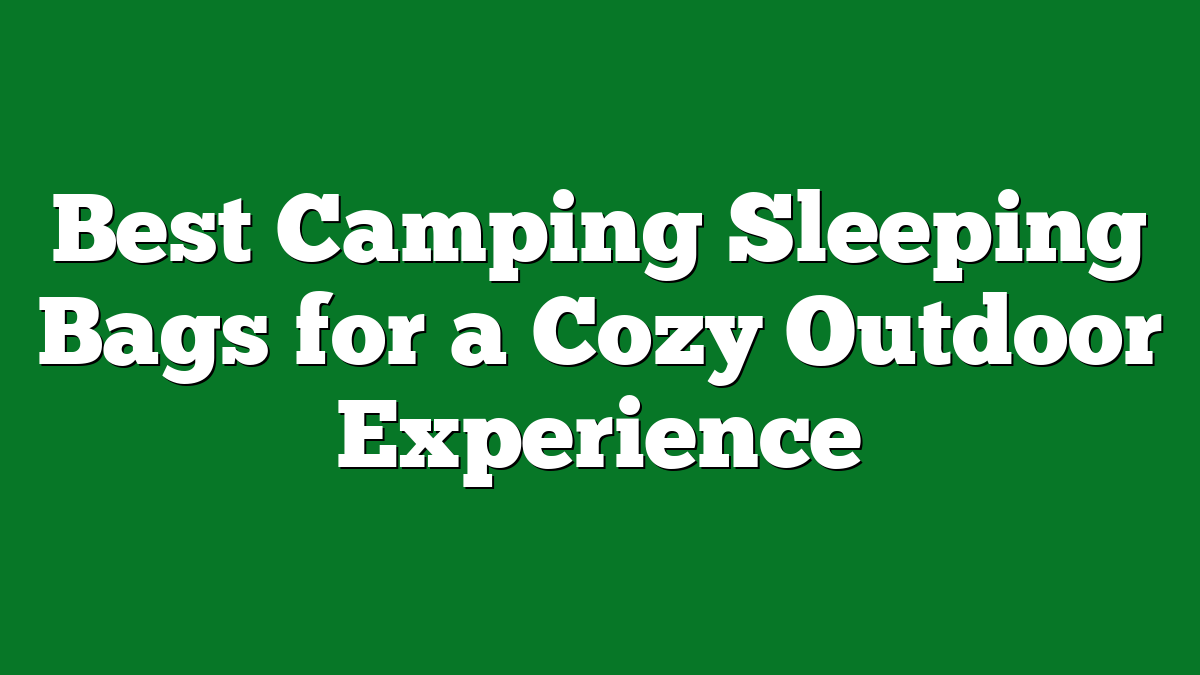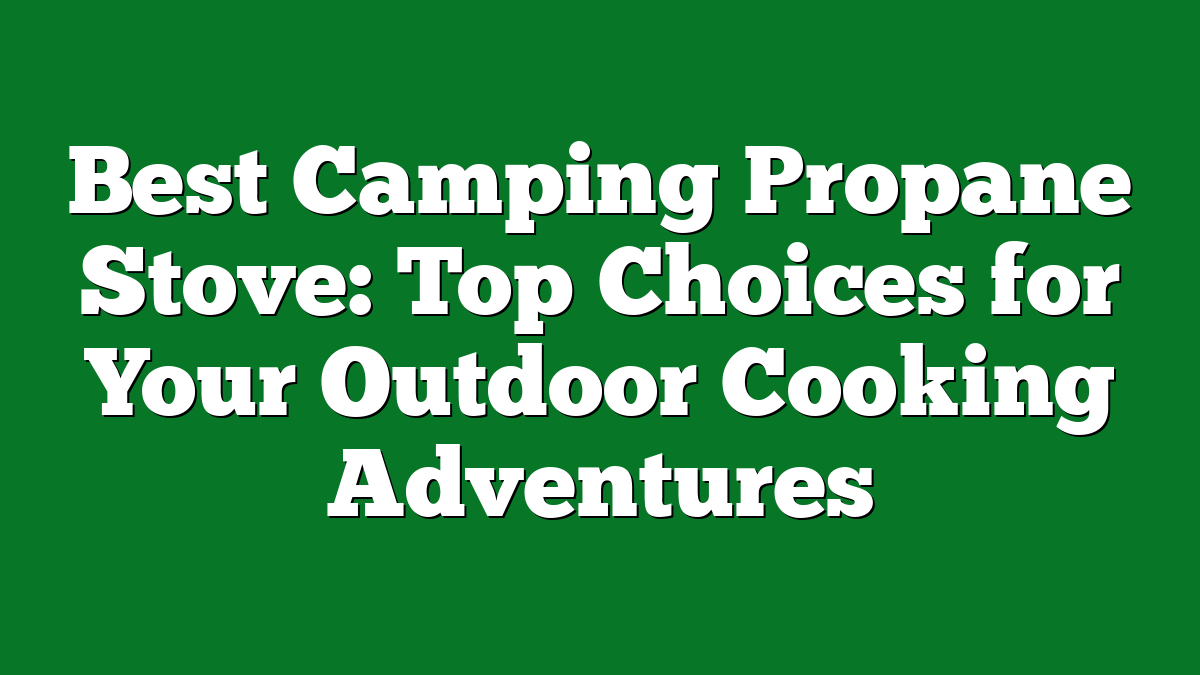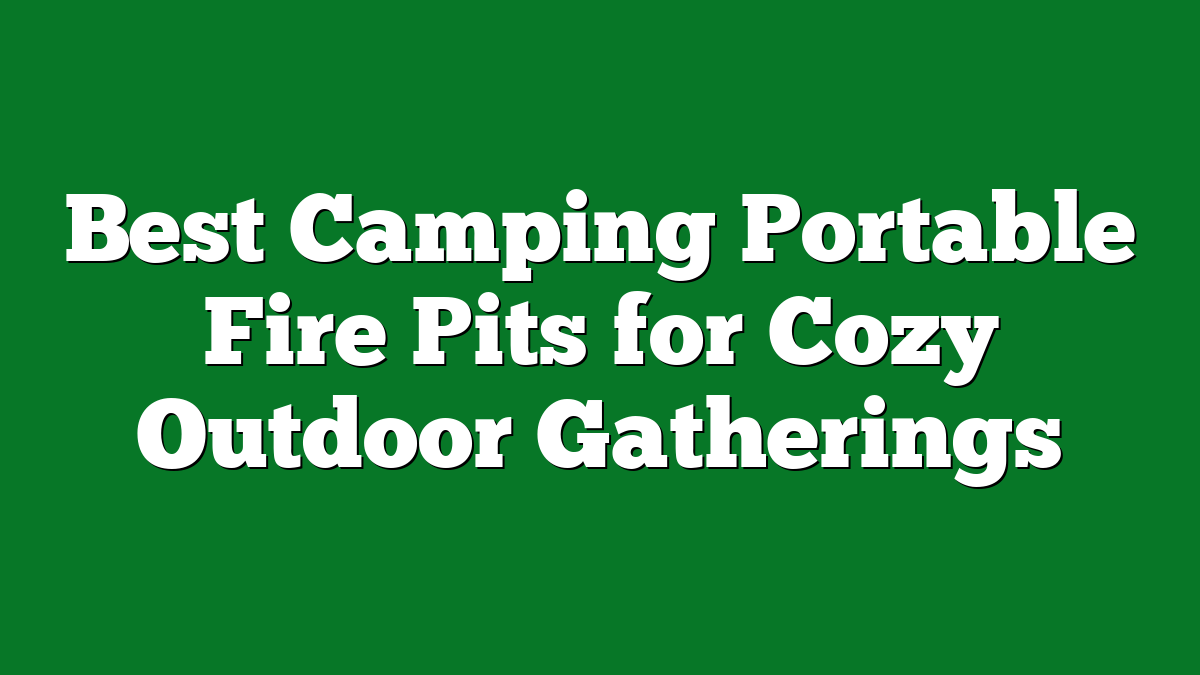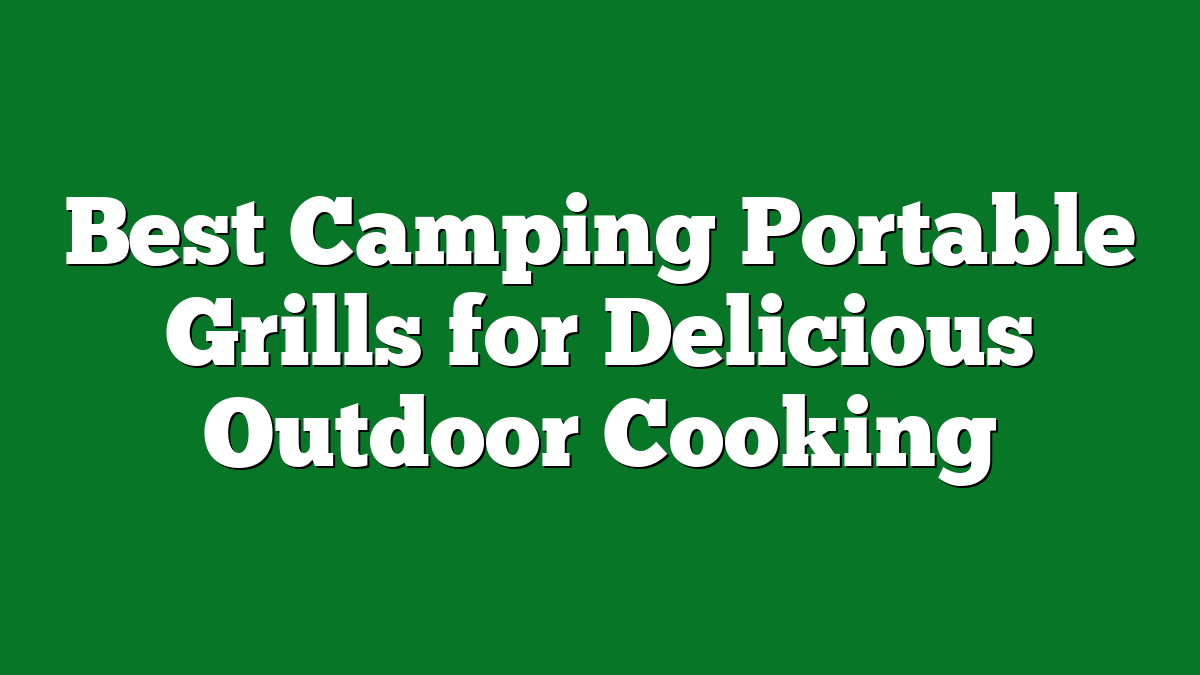Choosing the perfect campsite can make or break your outdoor adventure. I’ve spent countless weekends exploring the great outdoors and learned that the right location can enhance your experience in ways you might not expect. Whether you’re a seasoned camper or just starting out, knowing what to look for in a campsite can set the stage for unforgettable memories.
Importance of Choosing the Right Campsite Location
Selecting the right campsite location plays a pivotal role in shaping the camping experience. A well-chosen site creates comfort, safety, and access to activities. Here are key aspects to consider:
- Proximity to Water: Staying near a freshwater source like a river or lake provides easy access for drinking, cooking, and cleaning. Always treat water to ensure it’s safe.
- Level Ground: Finding flat ground for your tent or sleeping area enhances comfort. It avoids the rolling or sliding that sometimes occurs on uneven surfaces, ensuring a good night’s sleep.
- Shelter from the Elements: Picking a spot with natural windbreaks, like trees or hills, protects against strong winds and rain. This adds an extra layer of comfort during unexpected weather changes.
- Sun Exposure: Being mindful of sun exposure affects the warmth and dryness of your campsite. Morning sun can help dry dew, while afternoon shade can provide relief from heat.
- Wildlife Considerations: Locating your site away from animal trails and known food sources minimizes unwanted encounters. This protects both campers and wildlife.
- Access to Activities: Choosing a site close to hiking trails, fishing spots, or hunting areas enhances enjoyment. Easy access to these activities means more time spent doing what you love.
- Leave No Trace: Respecting the environment while choosing a campsite promotes sustainability. Selecting previously used sites and minimizing impact helps preserve nature for future adventurers.
Choosing the right location sets the stage for unforgettable experiences. Thoughtful planning and consideration make a significant difference in any outdoor adventure.
Factors to Consider in Campsite Selection
Choosing the right campsite significantly influences the quality of your outdoor experience. Here are crucial factors to consider for an enjoyable adventure.
Proximity to Water Sources
Proximity to water sources is vital for drinking, cooking, and hygiene. Locate your campsite within a short walking distance from a river, stream, or lake. Freshwater sources not only provide hydration but also enhance cooking versatility. I often filter water from nearby streams, ensuring I have clean water for all my needs.
Terrain and Ground Conditions
Terrain and ground conditions matter. Aim for level ground to set up your tent, as this enhances comfort during sleep. Inspect the area for stones, roots, and debris, which can create discomfort or even damage your gear. I prefer sites with a mix of soft grass or ground cover, making for a cozy resting spot. Also, consider how rain affects the terrain; avoid low-lying areas prone to pooling water.
Safety and Security Considerations
Safety and security cannot be overlooked. Camp away from potential hazards, such as dead trees or steep cliffs. Check the area for signs of wildlife and avoid spots with heavy animal activity. Positioning your tent a reasonable distance from water reduces encounters with animals while providing peace of mind. I always scout the area for escape routes and listen for any signs that might indicate a nearby predator.
Types of Campsite Locations
Choosing the right campsite location enhances the overall outdoor experience. Here are two common campsite types to consider for your next adventure.
Popular Campsite Types
- Campgrounds: Campgrounds often offer amenities like restrooms, showers, and picnic areas. Many have designated sites with fire pits and tables. They’re ideal for beginners seeking convenience.
- Backcountry Sites: Backcountry sites require hiking to reach them, providing a more secluded experience. These sites allow for a deeper connection with nature and less interaction with other campers.
- Waterfront Campsites: Campsites near lakes or rivers provide easy access to water for cooking, cleaning, and recreation. I find fishing or swimming nearby can elevate the experience, making those locations particularly desirable.
- Forest Campsites: Forest settings offer natural shade and shelter. These sites often provide an opportunity to observe wildlife, making them perfect for nature enthusiasts like me.
- Mountaintop Sites: Camping at higher elevations offers stunning views and cooler temperatures. These sites usually require more effort to reach but reward with beautiful sunrises and sunsets.
Off-the-Beaten-Path Locations
- Dispersed Camping: Dispersed camping means camping outside designated campgrounds. This allows for greater flexibility in choosing a location. I often find unique spots by following less-traveled roads or trails.
- Remote Wilderness Areas: Remote areas provide isolation from the crowds. These locations can require advanced planning and preparedness, but they deliver a true wilderness experience that’s hard to beat.
- Hidden Gems: Many parks and forests possess lesser-known sites that don’t draw large crowds. Researching online forums or local ranger stations often reveals valuable advice about these hidden gems.
- Rivers and Streams: Camping along rivers or streams can offer opportunities for fishing, hiking, and exploring. These spots often combine tranquility with recreational activities, making them favorites of mine.
- Islands or Coastal Campsites: If you love the beach, consider camping on an island or coastal area. These sites often offer unique ecosystems to explore and the soothing sound of waves.
Selecting the right campsite location, whether a popular area or an off-the-beaten-path site, depends on your preferences and adventure goals. Each type presents unique opportunities for exploration and enjoyment in the great outdoors.
Recommended Tools for Campsite Selection
Choosing the right campsite becomes easier with the right tools. I often rely on a mix of apps, websites, and local resources to pinpoint the perfect location.
Apps and Websites
I regularly use several apps and websites to streamline my campsite selection process.
- AllTrails: This app provides detailed hiking trails with user-generated reviews, so I can scout potential campsites along my hiking route. It shows elevation, terrain types, and extra points of interest.
- Campendium: This platform lists campgrounds across the country, complete with reviews and photos from fellow campers. I check for water sources, amenities, and site conditions before deciding.
- iOverlander: This app caters to overlanders and budget campers, offering an extensive directory of free and paid sites. It includes information about services like dump stations and water sources, plus local tips.
- The Dyrt: This one-stop shop features campgrounds, reviews, and booking options. It also shows amenities, photos, and important details to help me pick a well-suited site for my needs.
Local Maps and Resources
I never underestimate the power of local maps and resources when selecting a campsite.
- Topographic Maps: These provide insight into elevation changes and terrain types, helping me find level ground and avoid steep drops. I look for flat areas where I can set up my tent comfortably.
- Forest Service Offices: I frequently visit local Forest Service or Bureau of Land Management offices. They offer maps, brochures, and expert advice about current conditions and campsite availability.
- Fishing and Hiking Guides: These resources often include details about nearby camping locations, especially those close to rivers or lakes. I check these guides to find spots that align with my outdoor interests.
- Community Boards: I pay attention to bulletin boards at outdoor shops or local cafes. They sometimes list campsites or events in the area that can enhance my outdoor experience.
By leveraging these tools, I make my campsite selection process efficient and tailored to my outdoor pursuits.
Conclusion
Choosing the right campsite can truly transform your outdoor experience. I’ve learned that a little thought goes a long way in making sure you’re comfortable and safe while enjoying nature. Whether you’re near a bubbling stream or nestled in a quiet forest there’s something magical about finding that perfect spot.
Remember to consider your personal preferences and adventure goals as you explore your options. With the right tools and a bit of research you can discover incredible places that fit your needs. I can’t wait for my next camping trip and the memories I’ll create in a beautiful campsite. Happy camping!











